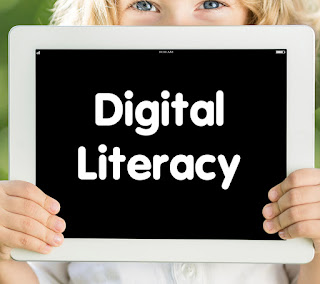Help Your Students
Become Digital Literate
Do your
students have the ability to find, evaluate, utilize, share, and create content
using various technologies? Digital literacy is an important topic
because technology is changing faster than society is. The same advances that
make our work easier—those that make it possible for us to search online
databases, text friends, and stream media—also present serious challenges, such
as copyright violations and academic dishonesty.
As educators, don’t we all
want to steer our instruction away from rote-memorization and, instead, promote
higher-order thinking skills (analyzing, creating, etc.)? In addition, don’t we
all want to have our students find their own learning resources and be able to
analyze them in order to create a more personalized learning environment? And,
aren’t our goals as educators geared towards ensuring our students have the
tools and knowledge they need to be successful citizens after graduation? These
are all reasons why it is important to promote digital literacy in your
classroom.
Below are a few links to sites
that contain activities and lesson plans designed to promote Digital Literacy
in your classroom.
What are some ways you are helping your students become
digital literate?
1. The Go Digital – Digital Learning Day has
compiled a set of digital tools, resources and lesson plans recommended by
fellow educators from around the country. There’s no need to wait for Digital
Learning Day, which is on February 17, 2016, to start using these resources.
2. Google
itself has a Digital Literacy and Citizenship Curriculum that has some excellent
materials on topics like: Evaluating Content Online, Managing your
Digital Footprint, and Identifying Online Scams.
3. Edutopia’s
Digital Literacy and Citizenship Round Up has collection of articles,
videos, and other resources on internet safety, cyberbullying, digital
responsibility, and media and digital literacy.
4. Toward
the bottom of Classroom Aid’s Resources for Teaching Digital Literacy, you will find a variety of
tips for helping your students search the web as well as resources for teaching
and learning digital literacy.
5. ReadWriteThink has a variety
of lesson plans on digital literacy for grades K-12. Each lesson plan
contains an overview, standards covered, resources and preparation,
instructional plan, and additional related resources.
6. We
can’t forget about Cybraryman’s list of awesome resources. His Digital Literacy
website contains many activities, projects, and websites to use in your
classroom.

No comments:
Post a Comment